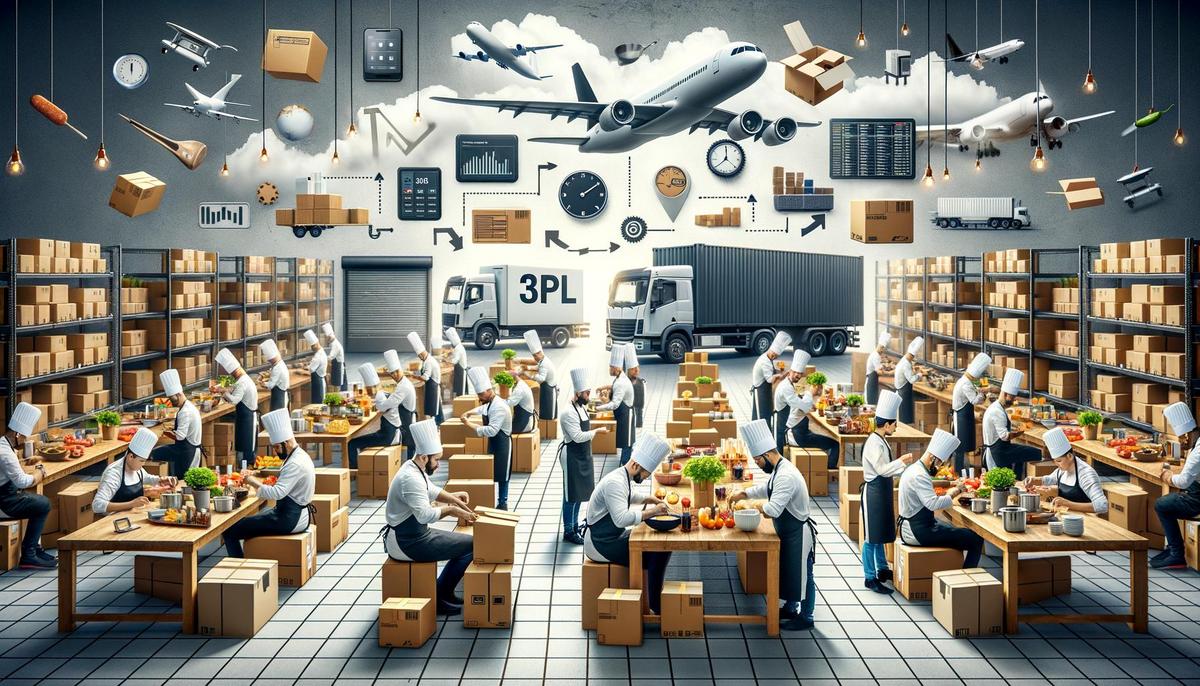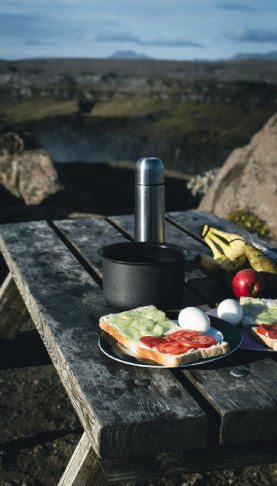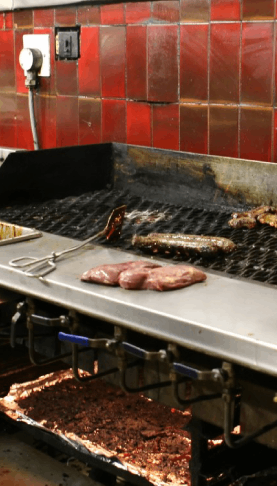They cut prep time, reduce mistakes, and keep food moving without drama. A kitting partner receives your bulk ingredients and packaging, portions every component, assembles the kit, labels it, and ships to your stores or your customers. That is what fulfillment services Los Angeles do for restaurant meal kits. If you want fewer out-of-stocks, cleaner labels, and less scrambling in the back of house, this path is hard to beat.
What kitting means for a restaurant or meal kit brand
Kitting is pre-assembly. Instead of a cook grabbing containers and scoops during a rush, a team builds a ready-to-cook or ready-to-heat bundle ahead of time. The bundle includes every component a guest needs, in the right portion, with the right label.
For a pasta kit, that might look like this:
- Fresh pasta, portioned to 180 g
- Sauce cup, 6 oz with tamper seal
- Grated cheese packet, 12 g
- Chili flakes, 1 g sachet
- Allergen sticker and reheating card with QR to a 60 second video
For a DIY ramen kit, it could be noodles, tare, broth pouch, chashu, scallions, nori, and a simple diagram so nobody misplaces the nori. I have watched a guest add nori to the broth first. It turned the bowl muddy. A clear sequence card fixes that.
Kitting is the menu, the recipe, the label, and the box all agreeing with each other before the first order ships.
To be fair, you can kit in the back of house. Many teams do. But as volume grows, small misses compound. One missing cheese packet in 100 kits feels small. In 10,000 kits, it is a flood of refunds and emails. That is the gap third party kitting tries to close.
Why restaurants hand off kitting
I have worked with groups that tried both paths. Some kept it all in-house. Some moved part of it to a partner. The ones who moved kitting out did it for a few clear reasons.
- Speed during peaks. Holidays, game days, and paydays hit hard. Pre-built kits absorb the spike.
- Lower spoilage. First in, first out at the case and unit level, with real lot tracking.
- Label accuracy. Ingredients, allergens, nutrition, and date codes printed the same way every time.
- Labor clarity. Cooks cook. Packers pack. Each job gets easier.
- Shipping that just works. Correct insulation, gel pack placement, and holdover rules by zone.
There is also the boring part nobody talks about. Regulatory paperwork. Food safety plans, temperature logs, recall drills, and audit files. A solid partner lives in that world every day so you do not have to reinvent it.
If you would not trust your team to run a mock recall in 2 hours, you are not ready to ship meal kits alone.
How a 3PL kits a meal kit
The steps are simple on paper. The details matter in practice. Here is the flow I see most often.
- Receive ingredients and packaging from your vendors
- Log lots and expiration dates
- Hold and test items that need checks before use
- Prep and portion to your spec
- Assemble each kit on a line with checks at each station
- Print and apply labels and date codes
- Pack in shipper with insulation and coolant based on route
- Tender to carrier on time windows you approve
| Step | What to define | What can go wrong | How to prevent it |
|---|---|---|---|
| Receiving | Approved vendors, case counts, temp at receipt | Warm product, shorted cases | Refuse policy, temp probe on arrival |
| Portioning | Weights, tolerances, tools, gloves, changeover rules | Mixed allergens, overfill | Color coded tools, scale verification every 2 hours |
| Assembly | Order of operations, photo standard, checks | Missing items, wrong garnish | Two-person check at close, camera over lane |
| Labeling | Ingredients, allergens, date format, lot code | Mislabel, unreadable print | Print test per shift, barcode scan audit |
| Cold pack | Gel pack type, count by zone, liner type | Thaw in transit, leaks | Thermal map by route, leak test per batch |
| Shipping | Carrier, service level, cutoffs, holiday rules | Late delivery, weekend holds | No Friday ship to 3 day zones, weather flags |
Most misses trace back to vague specs. If your spec says “add gel packs as needed,” you will get wide swings. If it says “2 x 16 oz gel packs above protein for 2 day lanes, 3 packs for 3 day lanes,” your temp holds steady.
Menu planning for kitting
Kitting likes structure. You can still be creative. You just want a backbone the line can follow.
- Use a bill of materials for each kit. Every line item with weight and container.
- Set a default pack plan by lane. One plan for local, one for 2 day, one for 3 day.
- Group SKUs that share components to cut waste. Pasta shape can vary while sauce stays the same.
- Limit new SKUs each season. If the line changes 20 items weekly, errors climb.
I like to keep a simple rule. One kit change per week, max. It slows the creative itch a bit. It keeps service smooth. You can test more in-store and add to kits once a month.
Food safety and cold chain
This is where many teams feel stress. It feels complex. It does not have to be.
- Have a written HACCP plan for each kit type
- Log temps at receipt, during portioning, and before pack out
- Separate allergens in storage and on lines
- Hold recalls drills twice a year
- Pick packaging that fits your route time
Ask your partner about their certifications, audits, and logs. Ask to see a blank and a completed temp log. Ask how they handle a carrier delay. If the answer is vague, that is a red flag.
Allergen labels should appear in three places: on the inner item, on the kit, and on the outer shipping label.
Packaging that protects food and your brand
Packaging is not just the look. It affects shelf life, safe shipping, and cost. I like to pick the smallest box that fits without squeeze.
| Packaging item | When to use it | Pros | Tradeoffs |
|---|---|---|---|
| Insulated liner, foam | Hot summers, 3 day routes | Strong thermal hold | Higher cost, poor curbside recycling |
| Insulated liner, cotton or paper | Milder routes, eco focus | Easier recycling | Needs more gel in heat waves |
| Gel packs, 16 oz | Most kits, 2 day lanes | Flexible, low mess | Weight adds up fast |
| Rigid sauce cup with seal | Sauces and dressings | Leak control | More plastic than sachet |
| Vacuum pouch | Protein, soups, broths | Longer freshness, leak control | Special gear and training |
| QR card | Recipe and video steps | Less paper, quick updates | Needs clean mobile flow |
Do leak tests. Fill the cup, seal, flip it, shake for 15 seconds. If it leaks, change the seal or the fill height. Sounds silly. Saves headaches.
Forecasting and prep cadence
The best kitting lines follow a rhythm. Forecasts do not need fancy models. A decent guess, updated often, beats a perfect model you update monthly.
- Use a 4 week rolling forecast
- Split by day of week and by region
- Lock kit counts 48 hours before ship
- Keep 10 to 15 percent extra dry components on hand
For protein and produce, shorter lead times help. I prefer to portion fresh protein daily and dry items twice per week. That mix keeps quality high and labor steady.
What kitting costs look like
Prices vary by market, volume, and how complex your kit is. Here is a simple view of common fees you will see. Your numbers will differ. Use this as a checklist, not a quote.
| Fee type | Typical unit | Example range | Notes |
|---|---|---|---|
| Receiving | Per pallet or hour | 15 to 35 per pallet | Includes count, temp check, putaway |
| Storage | Per pallet per month | 20 to 45 ambient, 30 to 60 chilled | Cooler space costs more |
| Portioning | Per unit or hour | 0.08 to 0.35 per item | Depends on complexity and speed |
| Kitting assembly | Per kit | 0.50 to 2.50 per kit | More line items equals higher fee |
| Packaging materials | Per kit | 1.00 to 6.00 | Box, liner, gel, labels, inserts |
| Pick and pack to ship | Per order | 1.00 to 3.00 | Sometimes bundled with kitting |
| Freight | Per shipment | Varies by zone and weight | Use zone charts and hold rules |
| Disposal | Per pound or event | Small but real | Expired or damaged product |
A quick napkin math example for 10,000 kits per month with mid-weight packaging:
- Receiving and storage: 3,000
- Portioning: 0.15 per item x 4 items x 10,000 kits = 6,000
- Kitting: 1.00 per kit x 10,000 = 10,000
- Materials: 3.50 per kit x 10,000 = 35,000
- Pick and pack: 1.50 per order x 10,000 = 15,000
- Freight: depends on zones, say 6.00 per kit average = 60,000
Total handling before ingredients and freight claims: 69,000 plus materials and freight, so 104,000 in this example. That is about 10.40 per kit before food cost. Again, your mix will be different. The point is to model it kit by kit and lane by lane.
Quality checks that matter
Most teams watch five simple metrics. Keep them on one page. Look at them weekly with your partner.
| Metric | Target | Why it matters |
|---|---|---|
| On time ship rate | 98 percent plus | Late orders spoil and upset guests |
| Mispack rate | Under 0.3 percent | Wrong or missing items drive refunds |
| Temperature out-of-range | Under 0.1 percent | Food safety first |
| Damage and leak rate | Under 0.2 percent | Packaging choice and training |
| Customer complaint rate | Under 0.5 percent | A fast feedback loop guides fixes |
If your mispack rate drops below 0.2 percent and stays there, you start to feel the calm in your inbox.
Set a clear rule for make-goods. For example, if temp is high or an item is missing, ship a replacement or refund within 24 hours. Track the cost. Fix the root cause. The faster you close the loop, the better your repeat rate looks.
Tech that keeps orders and inventory in sync
Good kitting pairs with clean data. The best partners connect to your order system and your inventory source. You can use Shopify, a custom site, or your own app. The key is to send orders, pull inventory counts, and write back tracking numbers without manual entry.
- Barcode every component and every kit
- Use lot codes and expiration dates in every scan
- Print labels on demand to avoid stale data
- Push tracking to customers right after tender
If you ever had an order that shipped without tracking, you know the pain. Support tickets pile up. A clean data path saves hours and keeps guests informed.
In-house vs partner: which fits your stage
I do not think one answer fits all. Here is a quick view that helps teams decide.
| Factor | Keep in-house | Use a 3PL |
|---|---|---|
| Daily volume | Under 100 kits per day | Over 200 kits per day |
| Menu stability | Many changes, testing phase | Stable core menu |
| Cold chain needs | Local delivery only | 2 to 3 day zones |
| Labor | Extra staff with time | Tight team, focus on service |
| Capital | Own cooler and space | Prefer variable costs |
One more thought. If your brand is built on in-store theater, keep the final step in-house for local customers and hand off out-of-area orders to a partner. A hybrid can work well.
How to start with a 3PL for kitting
Do not toss your menu over the wall. Treat it like onboarding a key hire.
- Pick three best sellers with clean specs
- Write a bill of materials, with weights and tolerances
- Create a pack plan per lane, with gel pack counts
- Draft labels with allergens and date code format
- Send sample ingredients and do a line trial
- Ship a small pilot to staff or friendly customers
- Measure temps, leaks, and delivery time
- Fix issues, lock the spec, then scale
I like to record the pilot unboxing on a phone. No edits. Just open and cook. If you cringe at any step, fix that step before you ship a thousand boxes.
A quick case from the field
A small ramen group I worked with wanted to sell at-home kits. They tried in-house first. Day one went fine. Day five, the walk-in was a maze. Staff were portioning noodles at 9 pm. Broth leaks hit 4 percent. Not great.
They moved portioning and kitting for the broth, tare, and toppings to a partner. They kept noodles and scallions in-house for local pickup only. Two weeks later, leak rate fell under 0.5 percent. Prep time after lunch dropped by 90 minutes. They sold more because the team had energy for service. Guests at home stopped posting photos of soggy boxes. The brand looked sharper with almost the same menu. Small tweaks, big calm.
Common mistakes to avoid
- Vague specs like “splash of sauce” or “handful of herbs”
- New packaging every week
- No hold rules for hot weeks or storms
- Forgetting dry ice rules for air shipments
- Skipping leak tests
- Packing leaf salads on top of gel packs
- Using labels that smear when cold
One that surprised me early on. Clear labels look great until condensation hits. If you must use them, pick a stock that resists moisture. Or accept a matte white and a clean font. Readability beats style when a box is wet.
Sustainability without the greenwash
Guests care about waste. You probably do too. There is no perfect package. There are better choices by route and season.
- Right-size your box to cut void fill
- Use liners that match your route time
- Offer a page on how to reuse or recycle gel packs
- Consolidate inserts into one card with QR
- Donate surplus with a clear policy to avoid stalls
I once tried a compostable liner that looked great in a pitch deck. It failed in a heat wave. Food safety first. Pick a greener option that still holds temp in your worst case route.
How kitting feeds your marketing
Meal kits live and die by repeat orders. The cook at home wants a small win. Fast. Your packaging can help them feel that win.
- Number the steps and the packets to match
- Place the spice mix on top so it is not forgotten
- Add a QR link to a 60 second video, no fluff
- Include one add-on that feels natural, like garlic oil for ramen
- Ask one question for feedback with a short link
I think about it like this. Can a tired person at 8 pm cook this without thinking hard? If yes, they will order again. If not, they will try a different brand next time.
Choosing a partner without guesswork
Take your time here. Pick three partners to test. Small tests beat long slide decks. Ask for the following:
- Facility tour, live or video
- Sample lot and temp logs
- Thermal test results by zone
- Error rate history and how they fix misses
- References from food brands near your size
Then send a test. Ship 50 kits to friends in two and three day zones. Track temps on a few with simple sensors. Ask for honest feedback. A good partner will welcome the test and your notes.
What happens behind the kit on the line
A well run line has small cues everywhere.
- Color coded bins for each component
- Weigh stations with posted tolerances
- Handwashing and glove change reminders at each break
- Photo of the perfect kit at the end of the lane
- Scale check log every two hours
It feels calm. You see it in how operators move. No rushing. No shouting. Just steady work. That calm floats downstream to your guests.
Procurement tips that save money without hurting quality
- Standardize sizes for cups and pouches across kits
- Buy labels in longer runs with blank stock and print on demand
- Pick two gel pack sizes and stick with them
- Consolidate spices into house blends where it makes sense
- Audit yield on expensive items monthly
A quick example. A group I know cut label SKUs from 32 to 6 blank sizes and printed on demand. Same look. Fewer changeovers. Lower cost. Fewer errors.
Service rules for shipping that avoid spoilage
Write these down and review them by season.
- No Friday ship to zones that take 3 days
- Pause ground to hot states during heat waves
- Switch to more gel packs when temps exceed 90 F
- Hold orders on holidays and show clear site messages
- Re-route to a pickup point if safe delivery is a concern
Carriers will miss sometimes. Weather will turn. A written plan beats a scramble at 4 pm.
What to do when something goes wrong
Something will go wrong. A seal will fail. A box will sit on a truck in the sun. Plan the fix before it happens.
- Define issue types that trigger refunds or reships
- Set a budget for make-goods per month
- Tag each case to a root cause
- Fix the spec or the process, not just the ticket
One of my earliest launches had a broth pouch fail rate of 2 percent. We moved from a flat seal to a double seal and reduced fill by 5 percent to reduce pressure. Fail rate fell below 0.2 percent. Cost of a slightly smaller fill was lower than repeated reships. Math and sanity lined up.
How this helps the kitchen and the guest
Here is the simple payoff you feel inside the restaurant.
- Back of house regains time to prep for service
- Front of house stops fielding shipping questions
- Managers get clean counts and clear ship windows
- Guests get consistent kits and clearer steps
When your team stops portioning at 9 pm and starts tasting sauces again, your food gets better. So do your reviews.
Quick self-check before you start
- Can you explain each kit to a new hire in 2 minutes?
- Are weights written down with tolerances?
- Do you have backup vendors for key items?
- Does your site handle cutoffs by zip code?
- Do you have photos of the perfect packed box?
If you answered no a few times, that is fine. Fix those first. Then move ahead. You will save time later.
Small details that feel minor but matter
- Place recipe card on top, not under gel packs
- Print date codes in a font that is easy to read
- Use a bright spot color for allergen calls
- Train carriers on pickup locations out of the sun
- Put a care tip on protein pouches to cut stuck seals
I keep repeating this one. Readability beats style when food is cold and packaging is wet. You want the guest to feel guided, not confused.
What I would do in your place
If I ran a restaurant group today and wanted meal kits, I would do this.
- Pick two best sellers that travel well
- Lock specs with clear weights and photos
- Test with a 3PL on 200 kits in two zones
- Measure temps, errors, and repeat rate for two weeks
- Roll out to three more kits after you fix issues
It is not fancy. It works. You can do all the branding and storytelling you want on top. The core should stay simple and repeatable.
Q: How long should a chilled meal kit stay safe in transit?
A good target is 48 hours with gel packs for most routes and 72 hours with stronger insulation and more coolant. Test your kit in your hottest route. Keep the core under 41 F the whole time. If you cannot hit that, shorten your ship zones or upgrade packaging.
Q: What is the fastest way to cut mispacks?
Use a photo standard at the end of the line, add a two-person check, and print labels on demand after the kit passes the check. That combo usually drops error rates in a week.
Q: Should I ship Friday orders?
Ship Friday only to next day zones. Hold the rest until Monday. Your refund rate will thank you. Your guests will too.













